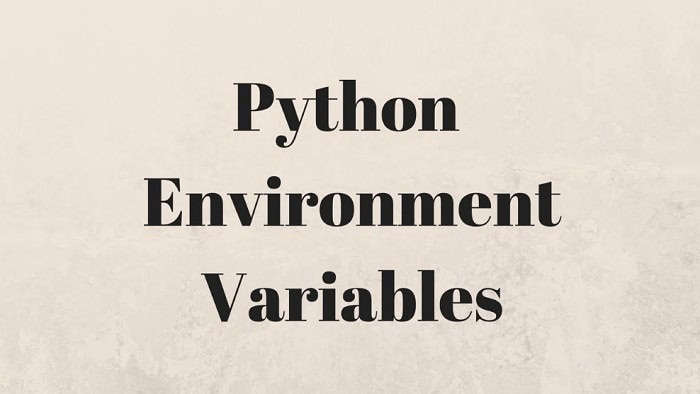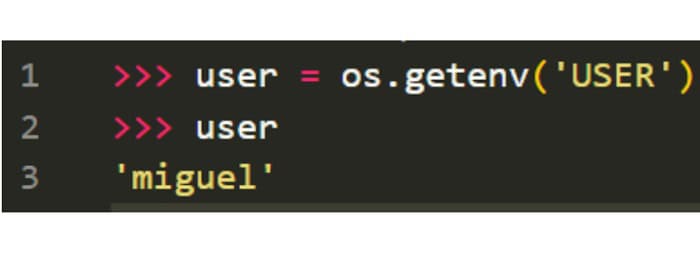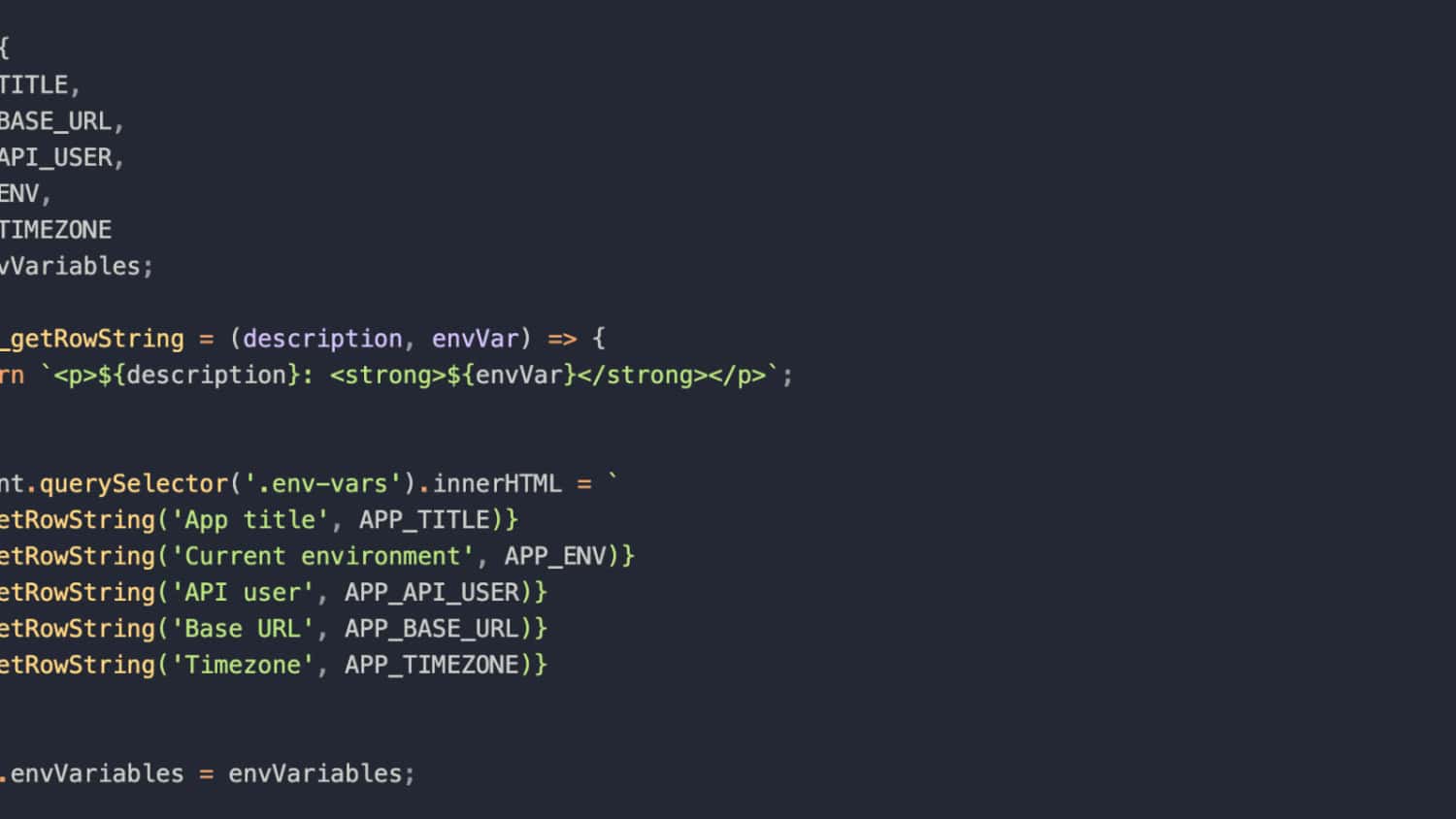When configuring your Python program, environment variables are an excellent way to do it without updating the source code. Environment variables frequently supply third-party API keys, network ports, database servers, and any other unique choices your application may require to function correctly.
Setting up environment variables might be tricky, but they are great at supplying the choices your application may need.

This article will discuss several tools and approaches to set environment variables in Python.
Table of Contents
How To Use Python To Retrieve Environment Variables
Given below are some of the ways you can use Python to retrieve environment variables:
Using The Dictionary In os.environ
The os.environ dictionary contains all the environment variables in Python. The standard dictionary syntax is the most straightforward approach to getting a variable from within your program.

When using this approach, Python will throw a KeyError exception if you attempt to import an environment variable that doesn’t exist.

Utilizing os.environ.get ()
Getting the critical error is a good idea for environment variables that your application needs, but there are some circumstances in which you might wish to make some variables optional. Use the dictionary’s get() function, which returns None if the requested key does not already exist in the dictionary, to prevent the error:

Including A Default Value To Use In The Absence Of A Declared Variable
As a second parameter, you may specify a default value for the absent variable that is not None:

Using The os.getenv() Method
The os.getenv() method also allows access to environment variables in Python. The os.environ.get() method and this function both operate in very similar ways. How to use it to access a variable is as follows:

When a variable is absent, this function returns None, much like os.environ.get, without raising an exception (). Additionally, it takes a second parameter with a personalized default value:

Is os.getenv() a superior option to os.environ? That is up to you. I like to use the os.environ dictionary since it allows me to terminate the application with a KeyError if a necessary variable is not present.
See Also: Why Use Python For Web Development
The Best Way To Set Environment Variables In Python
This section will briefly cover setting environment variables in a terminal or command-prompt window. Dominik Kundel, a coworker of mine, has produced an in-depth blog article titled “How to Set Environment Variables” if you want to know every conceivable technique to set environment variables in Python.
MacOS and Unix
When using a bash or zsh terminal session, there are two main approaches to setting an environment variable. Use of the export keyword is one.

Any scripts or programs you launch from this terminal session will inherit a variable configured in this manner. Remember that environment variables are not preserved anywhere other than inside the shell session’s context; thus, they will vanish once the terminal session is closed.

Since the variable is only set in the environment space of the intended application, the second version has this advantage.
The Microsoft Windows
There are a few choices available if you’re running Windows. See the article at the top of this page if you want to control environmental variables via the control panel.
You can modify an environment variable using the set command while in a command prompt window. It is also possible to define an environment variable by setting it on the line where the target program is run:

Microsoft Windows will keep the variable only for the duration of the current session, just like in the Unix example.
The syntax for establishing environment variables is entirely different if you’re using the more recent PowerShell console:

Finally, if you’re using a Unix compatibilities layer like WSL or Cygwin, you must use one of the techniques for bash or zsh specified in the Unix section above.
Utilizing.env files
Are you perplexed by the many methods for setting environment variables? Each platform or shell requiring a distinct process is annoying to me personally.
A .env (pronounced dot env) file is superior to maintaining your environment variables. A text file with each variable defined on a separate line is called an “env file”. With .env files, dealing with environment variables is consistent across all platforms since the format of a .env file is the same on all operating systems. And if that weren’t enough, you can avoid manually configuring your environment variables each time a new shell launches by writing them in a file that Python will automatically import.
Here’s a brief .env file illustration with two variables:

To keep all the variables required by each project organized, create a .env file in the root directory of each project.
Python program will import variables specified in an a.env file into the environment using the python-dotenv module. To install Python-dotenv in your virtual environment, you can use Pip:

See the instructions for importing an.env file into a Python program below:

Load dotenv() method adds all variable definitions in a file called .env, located in the current directory, to the os.environ dictionary. If the a.env file cannot be located in the current directory, look for it in the parent directory. A.env file must be located, or the top-level directory must be for the search to stop.
You may explicitly specify the path to your file as an input to load dotenv() to stop python-dotenv from looking through your folders for the a.env file:

When using the load dotenv() method, you have a few more parameters. Consult the documentation if you want to learn more about them.
You can access environment variables by utilizing the abovementioned techniques after importing the.env file.
Security Information Regarding .env Files
The environment variables you add to your .env files frequently include sensitive data, such as API keys or passwords. Because of this, you should avoid adding these files to the source control repository for your project.
It is customary to include an exception for files with this name to prevent them from being accidentally added to source control. You can add a line containing the file’s name to the .gitignore file at the repository’s root for git.

But how can you inform project users which variables to set if you cannot commit the .env file? For this, you may add an example .env file to your repository with a name like “env.example,” which provides the list of variables the project needs but doesn’t include their values. Without revealing sensitive information, this acts as advice for project users.
FAQs
How can you save an environment variable in the Python command line?
Firstly, select the Environment Variables option. To add a new environment variable, select New under System Variables. Enter PYTHONPATH and c:pathtomy_modules as the variable names and values, respectively. Hence, to save the environment variable, click OK.
What are Python environment variables?
It is a dynamic value available in the environment and accessible to several of the system's running programs and scripts. Hence, all programs and processes executing on the system usually have access to environment variables.
Where are Python environment variables saved?
Environment variables are essential for abstracting sensitive data, and you can save it at the operating system level as key-value pairs. Additionally, rather than hard coding the values, they assist a programmer in setting an application by allowing them to change.
What does Python PATH hold?
An environment variable called PATH holds a collection of folder paths. A colon, or a semicolon for Windows-based systems, separates each path in route. However, it functions similarly to a Python variable with a lengthy string as its value.
What does Python namespace mean?
In Python, a namespace is a collection of symbolic names that are now available, along with information on the objects to which each term refers. In a namespace, the keys are the things' names, and the values are the things themselves. It is similar to a dictionary.
What is the basic syntax?
Basic syntax denotes the core laws of a computer language. You can also make functional code with these rules. Additionally, each language's fundamental syntax has a collection of regulations. However, basic syntax norms include naming conventions, which vary depending on the language.
Conclusion
These are the ways that highlighted how to set environment variables in python. This post helped you better understand how to configure your Python applications using environment variables. If you’re a JS programmer, you can learn five different ways of using a JavaScript variable in HTML.
See Also: Complete Full-Stack Development Roadmap For 2024
Enjoys programming, web development experience, experience in web technologies such as HTML, CSS, CSS Bootstrap, PHP, Javascript, MySQL, excellent IT skills.